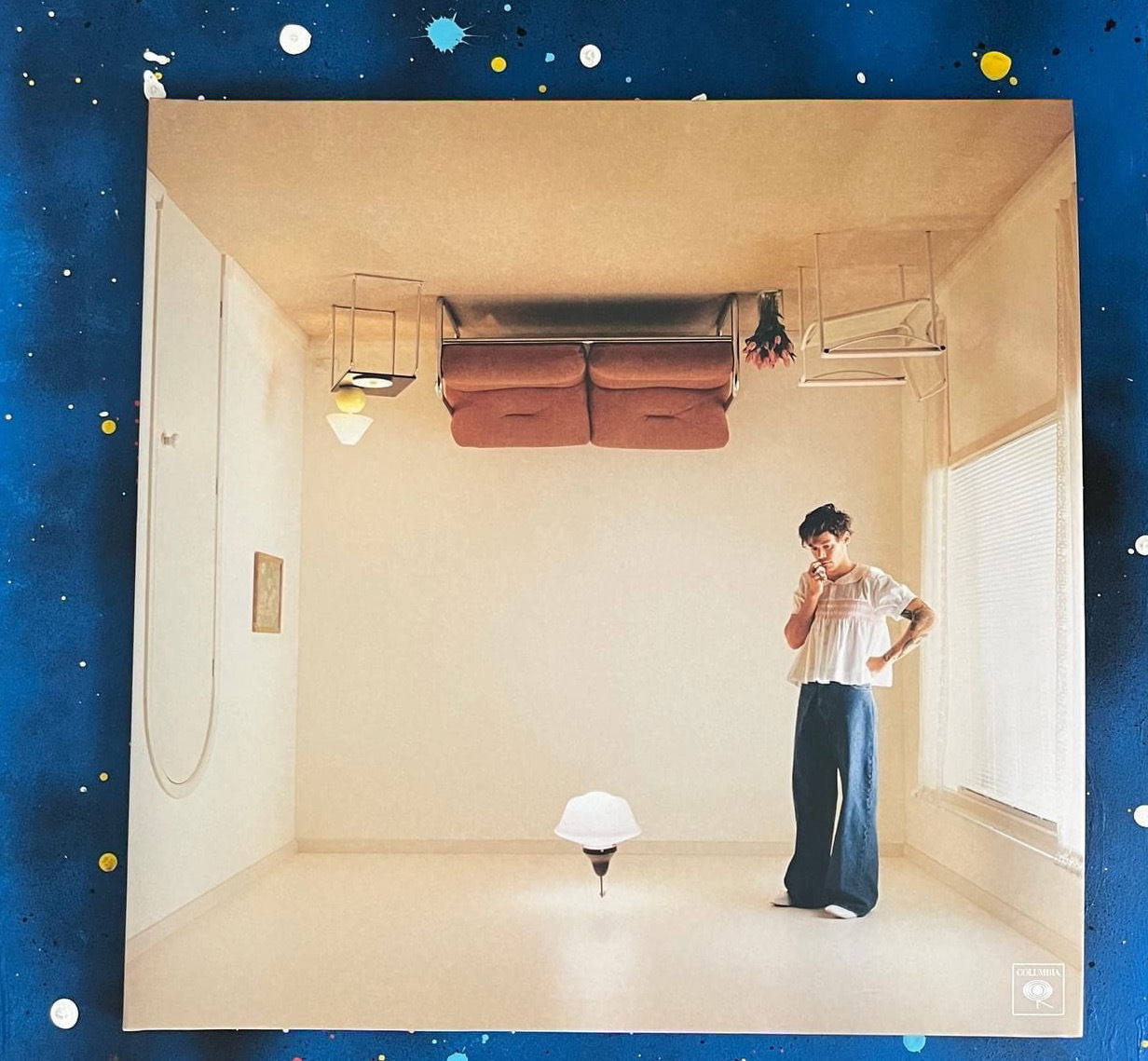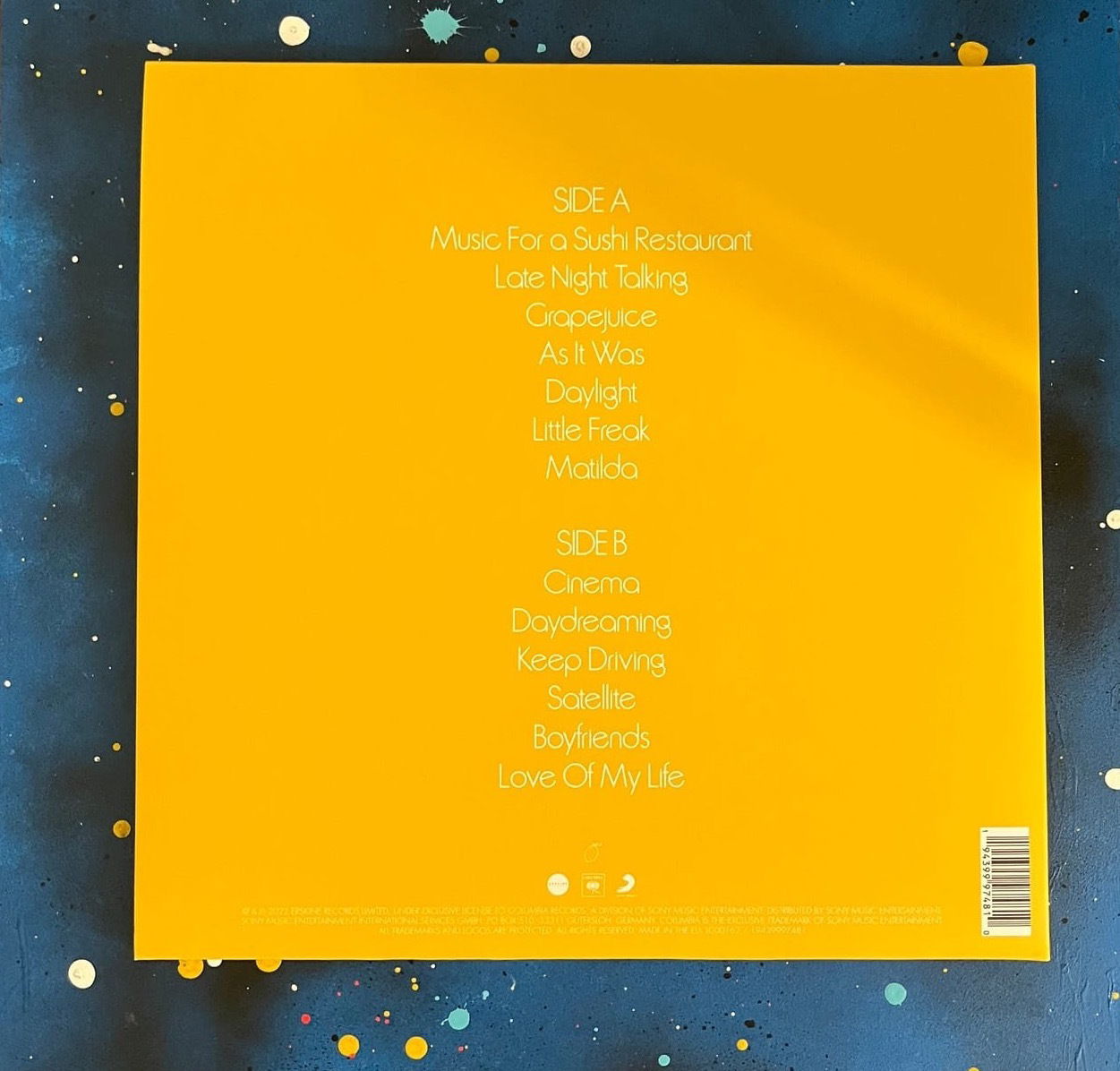Harry Styles: Harry’s House

The third album by global pop megastar Harry Styles is up for review.
Side A opens with ‘Music for a Sushi Restaurant,’ a pulsating, high-energy pop banger with some truly interesting lyrics. It's a song that grabs listeners right away, with Harry's vocals dipping in and out of different styles, while the instrumentation shifts and pulsates throughout. Quite the opener.
‘Late Night Talking’ follows a more traditional pop sound that we’ve come to expect from Harry. This track wouldn't sound out of place on any of his previous solo albums. That’s by no means a criticism; it’s familiar, yet still a great song. With shimmering pop elements and nods to the '80s, it provides an intimate look into Harry’s mind.
‘Grapejuice’ slows things down a bit, offering a more soulful vibe than the previous tracks. It carries a hint of The Beatles and continues Harry’s theme of fruit-inspired song titles. A slow, mellow track, it gives listeners a moment to catch their breath. Lyrically, this is one of the album's standout pieces.
‘As It Was,’ the album’s lead single, is easily one of the best things Harry has ever done. It’s a perfect pop song. Catchy, emotionally resonant, and full of energy. The track opens with a signature synth riff that feels both nostalgic and fresh, setting the tone for the rest of the song. The chorus is massive, with instantly quotable lyrics that tap into universal themes of change and longing. There's a sense of vulnerability beneath the glossy surface, as Harry sings about the dissonance between who he was and who he has become. The song’s production blends upbeat, almost euphoric instrumentation with a bittersweet undertone, making it a true pop anthem. It’s a song that can make you want to dance while also tugging at your heartstrings.
‘Daylight’ follows, marking Harry’s venture into R&B. The song's instrumentation takes center stage, with Harry’s vocals taking a more subdued role. This album sees Harry embrace new styles and ideas, and somehow, everything fits together seamlessly. ‘Little Freak,’ the penultimate track on Side A, is powered by dark synths and drum machines. It features one of the best vocal deliveries on the album. A moody, brooding song, it addresses a relationship in a way that's far removed from what we've come to expect from Harry Styles.
Finally, ‘Matilda’ wraps up Side A with its folk-inspired acoustic sound, a clear nod to Joni Mitchell. This track sees Harry reflect on how much his life has changed, offering a raw, vulnerable side of him. It's one of my personal favorites on the album sometimes, keeping things simple is the most powerful way to convey an important message.

Side B opens with ‘Cinema,’ where Harry ventures into the world of disco. The track is a vibrant, danceable banger, with Harry weaving his lyrics effortlessly through layers of a brilliantly crafted, infectious beat. It’s a song that demands you move, while his smooth vocals add a touch of charm to the energy. The combination of sparkling production and Harry’s playful delivery makes it one of the standout tracks on the album.
Daydreaming’ is another highlight, showcasing one of the album's best choruses. In terms of sheer catchiness, it holds its own next to ‘As It Was.’ The song’s dreamy, introspective vibe is a window into Harry’s inner thoughts, making the lyrics feel deeply personal. This track feels like a conversation, intimate and reflective. As Harry shares his musings with the listener, making it resonate on a more emotional level.
‘Keep Driving’ occasionally stumbles with its lyrics, sometimes veering into odd word combinations—think “cocaine-side boob.” While these quirky, Turner-esque phrases might feel a little out of place, the song still manages to captivate. The chorus, which poses the question, “Should we just keep driving?” feels philosophical and offers listeners something to ponder, adding a layer of intrigue that keeps you coming back for more.
‘Satellite’ is my favorite track on the record. The song takes listeners on a journey to space, with sci-fi drones and chant-like vocals that create an ethereal atmosphere. It’s a track that feels otherworldly, transporting you into the unknown. The guitar solo is nothing short of unbelievable, and musically, it stands as one of the strongest pieces on the album. The way it shifts and builds makes it a standout moment in Harry’s entire discography.
‘Boyfriends’ serves as the penultimate track, offering a more grounded moment with its finger-picked guitar and intimate examination of relationships. It’s a step back down to earth after the cosmic adventure of ‘Satellite.’ The song’s vulnerability and simplicity are stark in contrast to some of the more experimental moments on the album, showing Harry’s range as an artist. It’s a quiet but powerful addition, and yet another facet of his evolving sound.
This record is undoubtedly Harry’s best. With Harry’s House, he’s fully in control, making the music he wants to make, when he wants to make it. Three albums in, and the shackles are off. ‘Love of My Life’ closes out the album with a track that echoes the dark synths and drum machines of ‘Little Freak.’ Harry’s vocal delivery is unique, switching up multiple times, giving the song a haunting, unpredictable quality. It’s one of the most underrated tracks on the album and a fitting end to the journey.
Harry’s House is a perfectly crafted pop record. It’s an album that reveals more with each listen, and in doing so, it highlights Harry at his most expansive and intimate. Harry’s House is not just a place. It’s Harry’s thoughts, feelings, and ideas, encapsulated in music. Home, really, is where the heart is.